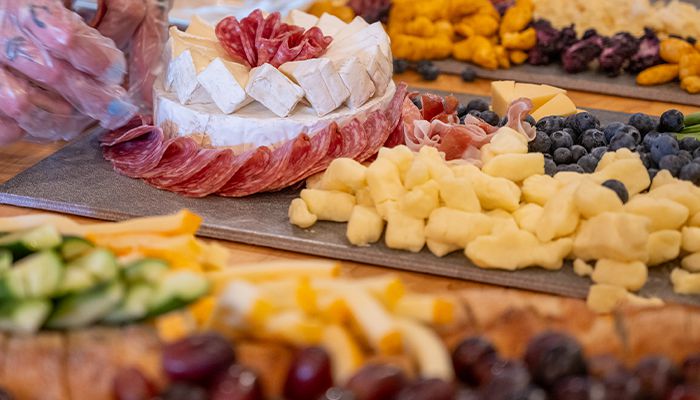Dairy delivers in new ways
Author
Published
6/10/2024
The dairy market has had its ups and downs, but demand remains strong, according to Midwest Dairy Association.
However, that demand has changed. Liquid milk consumption is down. Cottage cheese has discovered renewed popularity.
Maureen Windisch, senior manager of consumer insights and business strategy with Midwest Dairy, says taste and flavor are the rule of the day.
According to global market intelligence agency Mintel, about 72% of U.S. consumers say taste is important when selecting foods and beverages.
“Taste preferences are constantly evolving,” says Windisch, “and we’re seeing a lot of innovation in flavors especially with seasonal or limited time offers.”
Pumpkin spice is an example. Once considered a seasonal flavor, she says it has now expanded beyond the traditional season and into more dairy products.
“Product innovation around flavors represents the largest percentage of new product introductions in the dairy case,” says Windisch. “Traditionally, the 80/20 rule applies: 80% of a dairy category’s growth comes from 20% of the products. And generally, those products are new products.”
Say ‘cheese’
Other products like ice cream and yogurt are also expanding their flavor profiles.
Cheese benefits from the rise in popularity of charcuterie boards. Forty percent of consumers say they are open to trying new types of cheese, according to the Mintel survey.
Curiosity for new taste experiences is driven, in part, by growing demand for ethnic foods. As the population becomes more diverse, more people are exploring the new eating experiences and flavors.
Second on the list of forces driving consumers, according to Windisch, is affordability. According to Mintel, about 55% of U.S. consumers say affordability is important when selecting foods and beverages.
“Inflationary pressures are still impacting consumers’ wallets. About 25% of consumers say they always purchase the lowest priced product and seek out deals,” says Windisch.
She says many private-label products are growing because they offer more value to the budget-conscious consumer.
Health benefits
Health and wellness is the third factor top of consumers’ minds. According to Mintel, about 45% of U.S. consumers say nutritional value is important when selecting foods and beverages.
Weight management and blood sugar control are top of mind with consumers, especially older consumers.
“A high-protein eating style can help control hunger. According to Innova Market Insights, 40% of consumers say protein is the most important ingredient when selecting a nutritious food or beverage,” says Windisch. “For this reason, protein claims have never been higher, and they are poised to keep growing.”
Protein claims on cheese grew 53% in 2023, with 44% of consumers saying they consume cheese for its protein; 39% say they choose milk to get theirs.
Today’s consumer is more aware of the importance of gut health. According to Mintel, 76% of global consumers recognize a link between digestive health and overall well-being, and about 32% of consumers say they actively try to consume probiotics.
“For these reasons, we are seeing more foods and beverages that are lactose-free and fermented,” says Windisch. “These new products have helped build awareness that dairy products can help support consumers’ digestive health.”
The continued interest in dairy products is good news for dairy producers.

Pictured above: U.S. cheese consumption is reaching new peaks, surpassing 40 pounds per person in 2022, as the popularity of charcuterie boards introduces consumers to new flavor profiles. PHOTO / CONRAD SCHMIDT
“There’s a moderation component, but consumers have not traded taste, and dairy is delivering,” says Martha Kemper, vice president of dairy experience and business development with Midwest Dairy.
There is an emphasis on innovation, and value-added is still a leading force, with more consumers interested in simplified products, like unprocessed cheese, rather than heavily processed items.
Convenience matters, especially to Gen Z, an emerging consumer group, who like their cottage cheese and yogurt in individual on-the-go packaging.
A renewed interest in cooking, spurred by COVID, is also a factor. Consumers are finding uses for dairy products in their home kitchens, not just restaurants.
“We’re producing a new round of good cooks,” says Kemper. “They’re discovering dairy and finding back-to-basic solutions for everyday meals and family gatherings.”
“Dairy fits nicely into today’s lifestyle, and dairy has a good story to tell,” adds Kemper. “And that means a bright future for the industry.”
Queck-Matzie is a freelance writer from Greenfield.
Want more news on this topic? Farm Bureau members may subscribe for a free email news service, featuring the farm and rural topics that interest them most!